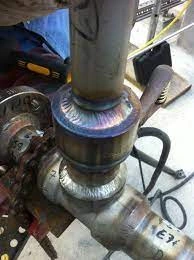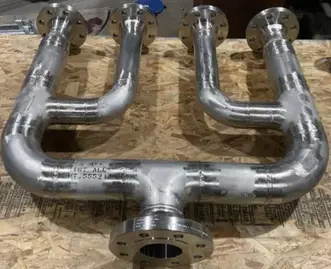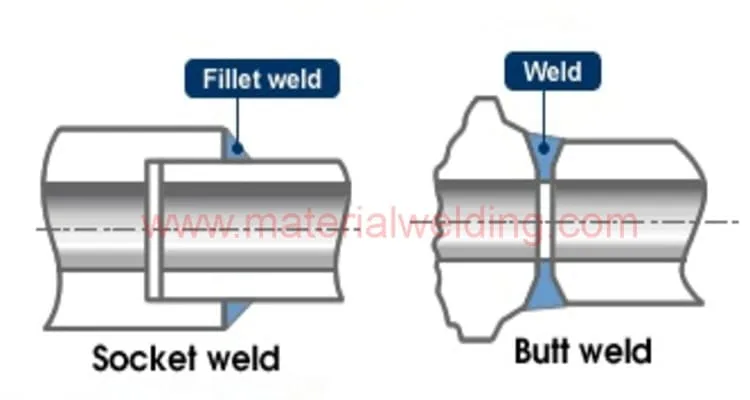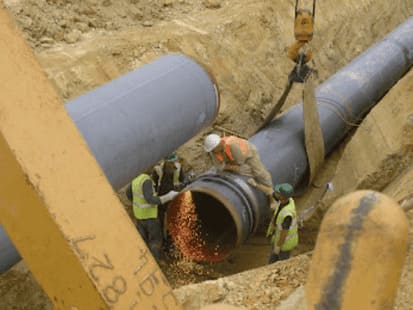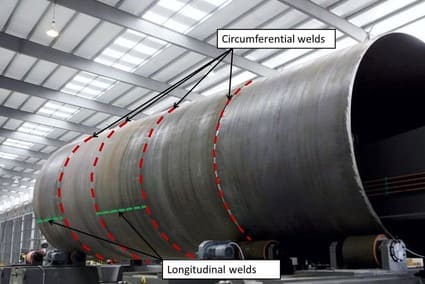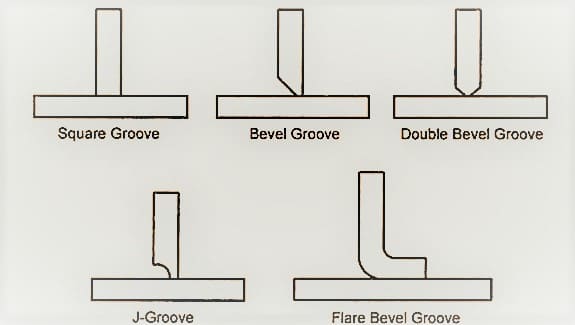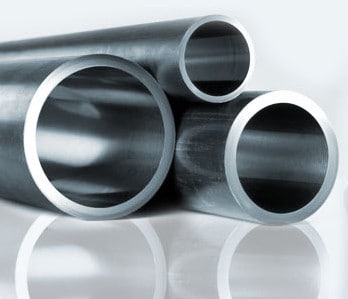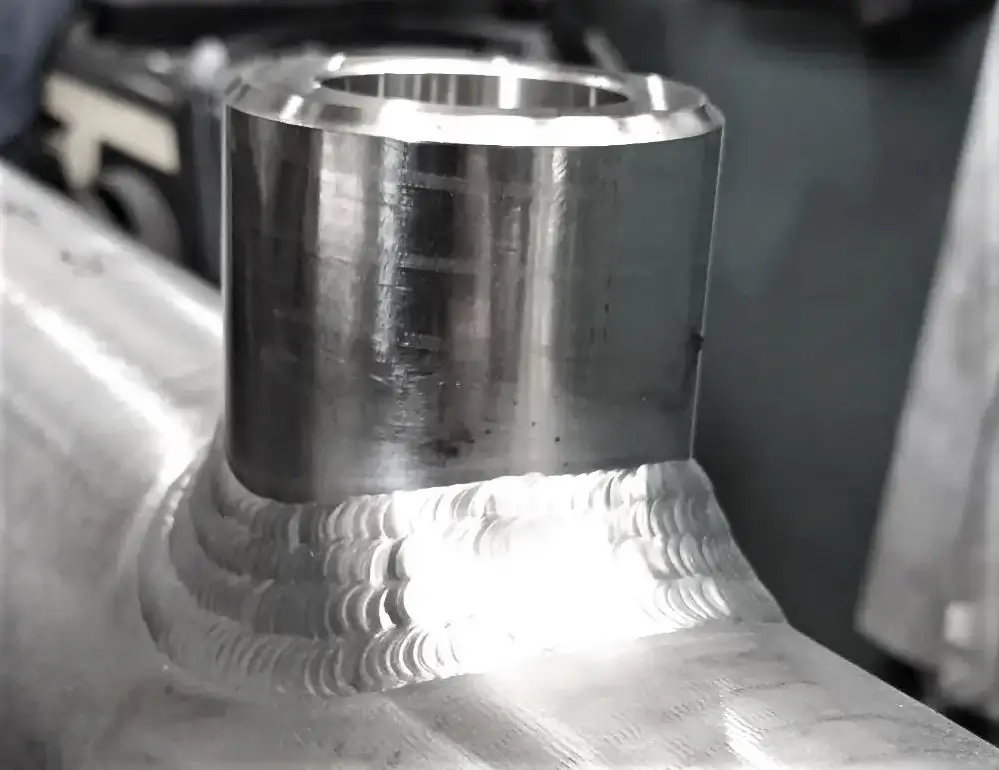Introduction: What is a Weldolet?
A Weldolet is a branch connection fitting that is used to weld onto the run pipe (header pipe) to provide an outlet from the main pipe.
It is a forged and machined piece of carbon steel (or other alloy) that has a beveled end that is prepared for welding. The other end of the Weldolet also has beveled that that is used to connect to the branch line by welding.
Weldolets are available in sizes ranging from 1/4” through 48”, and they are manufactured in accordance with ASME B16.11. Forged Weldolets are available in Carbon Steel, Stainless Steel, Alloy Steel & Low Temperature Carbon Steel Grades.
You can also find weldolet sizes in MSS SP-97-2019. MSP-SP-97 covers essential dimensions, finish, tolerances, testing, marking, material, and minimum strength requirements for 90° and 45° integrally reinforced forged branch outlet fittings of buttwelding, socket welding, and threaded types.
Weldolet Dimensions
Weldolet is a fitting that is used in piping. It is welded to the pipe and has a branch that goes off at an angle. The branch can be welded to another pipe or to a piece of equipment. Weldolets are available in different sizes and dimensions. The size of the weldolet will depend on the size of the pipe that it is being welded to.
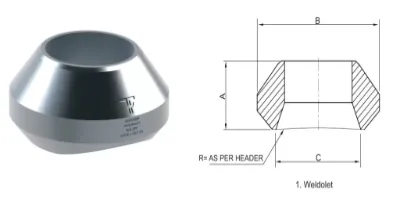
The most common type of weldolet is the standard weldolet (full size) that is used to connect a branch line of same size as header pipe. The standard weldolet has a 90 degree angle and is available in sizes from 1/4 inch to 48 inches.
There are also reducing weldolets which have a smaller branch than the main header pipe (e.g., connectinr 4 inch pipe to 2 inch branch connection). Reducing weldolets are available in sizes from 3/4 inch to 24 inches.
Why are Weldolets used in Welding?
A Weldolet is a welded branch connection and is a fitting that is used when a pipeline needs to be branched off. It is welded onto the main pipe and provides an opening for a branch line. The branch line is then connected to the Weldolet with welding.
Weldolets are used in welding because they provide extra support for the branch line and they create a stronger welding connection than if the branch line was just welded onto the main pipe. They also allow for easy installation of the branch line and they can be installed without having to cut or grind the main pipe.
Weldolets are available in different sizes and materials, which allows them to be used in a variety of applications. They are commonly made from carbon steel, stainless steel, or other alloy.
Weldolet Weld Size & Welding Symbol
Weldolet welds are classified according to their size and welding symbol. The most common sizes are 3/8″, 1/2″, and 5/8″. The welding symbol for a Weldolet are usually either a fillet weld or combination of groove weld with additional fillet weld.
The size of the Weldolet is determined by the thickness of the material being joined.
Weldolet Welding Type
Weldolets are fittings that are used to connect two pipes together. They are typically welded onto the pipe, which is why they are called weldolets.
A weldolet is a specialized type of welding that is used to join main pipe to a branch pipeline. The process is similar to that of welding a pipe fitting, but there are some key differences that make weldolet welding a unique process.
Weldolets are typically made from stainless steel, carbon steel, or aluminum. The material choice depends on the application and the desired strength of the joint. For example, aluminum weldolets are commonly used in the food and beverage industry because they are lightweight and have a high resistance to corrosion.
Weldolet Welding Requirements
Welding a weldolet onto a pipe is a common way to branch out pipelines. It’s a type of socket weld fittings, which means it has a circular welding area. The welder needs to be aware of the different requirements when welding this type of fitting.
ASME B31 is the collection of standards that regulate systems for working pipework. ASME B31 sets the rules for reinforcing outlets and fittings. Weldolet welds need to complete joint penetration (CJP) until the outer edge of weld bevel of the weldolet with a good weld capping.
A good welding bead placement of a weldolet joint is given in the below picture.
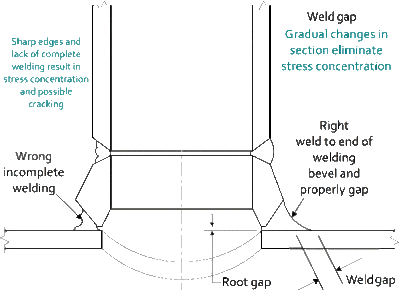
Follow following rules when welding weldolet:
- Ensure a uniform root gap between weldolet and joining branch connection using a spacer.
- Ensure complete root fusion & penetration.
- The complete filling of bevel groove until the outer edge of the weldolet.
- welding a smooth transition between weldolet and the main pipe. Ensure there is no excessive welding. welding a excessive fillet will not add any strength but damage the weld properties and increase the welding cost.
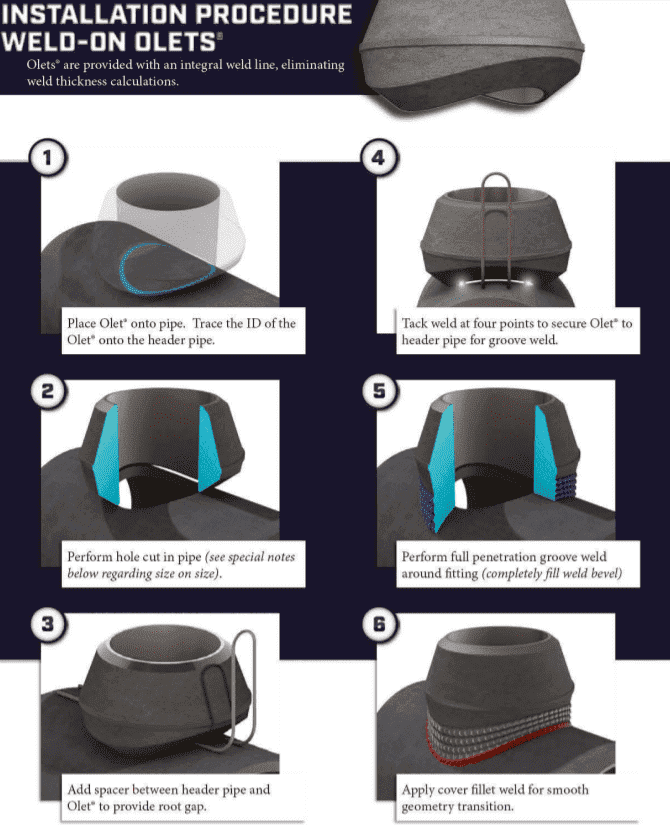
If these requirements are not met, then the weld may not hold up under pressure or may fail entirely. This could lead to serious problems, such as a leak in the system or even an explosion. Therefore, it is important to make sure that all of the necessary precautions are taken before beginning any welding project.
How to Weld Weldolet on Pipe?
Welding a weldolet onto a pipe requires special welding techniques and knowledge of the properties of the materials being used.
The first step is to determine the type of joint to be used. The most common types of joints for welding a weldolet onto a pipe is butt joints.
The next step is to prepare the materials for welding. This includes cleaning the surfaces to be joined, adding any necessary filler material/ spacer for a smooth root gap, and ensuring that the pieces are properly aligned.
Once the materials are prepared, the welder will use an arc welding machine to carry out the welding by placing fill & capping beads in a uniform manner.
The welder will need to have a good understanding of how much weld size need to be make as per the drawing (refer above guidelines for weld size). After the weldolet is successfully welded onto the pipe, it is important to inspect the joint for any welding defects, leaks or other potential problems.
Weldolet Welding Calculation
When it comes to welding a weldolet, there are certain calculations that need to be made in order to ensure a strong, secure weld.
First and foremost, you need to calculate the size of the weldolet based on the thickness of the pipe.
The next calculation is for the root opening, which needs to be large enough to accommodate the electrode and allow for complete weld joint penetration.
Once you have all of these calculations figured out, you’re ready to start welding! First, clean the area around the joint to be welded. Next, set up your power source and electrode according to your drawing.
Sockolet vs Weldolet
Sockolet and Weldolet are two types of fittings that are used in welding. They are both used to connect two pieces of pipe together, but there are some differences between them.
Sockolet is a fitting that is welded onto the end of a pipe. It has a socket that the other pipe can be inserted into. Weldolet is a fitting that is welded onto the side of a pipe. It has a weld bevel on both sides that the other pipes can be welded to.
Sockolet is a type of socket fitting while weldolet is a butt weld joint fitting. The strength of a Sockolet welding joint is much less compared to a weldolet joint.
Hence, use of sockolet is limited for low pressure pipelines and smaller diameters.
While weldolets are used for high pressure lines and larger pipe diameters.
How are Weldolets Installed?
Weldolets are installed by welding them onto a pipe. This is typically done with a tungsten inert gas (TIG) welder for tig welding, fill & cover passes. Fill and cover passes are also made using stick welding. Use of TIG welding for root run ensure very good root run fusion & quality.
Once the Weldolet is fully welded onto the pipe, it is important to inspect the weld to make sure that it is strong and free of welding defects. If everything looks good, then the Weldolet is ready to be used.
What are the Benefits of Weldolets?
Weldolets are a great way to save time and money when welding. There are many benefits to using weldolets, including:
-They can be used to weld two pieces of metal together without having to use a separate bracket or clamp.
-Weldolets are less likely to cause warping or distortion of the metal.
-They can be used on materials of different thicknesses.
-Welding with weldolets is generally faster and easier than other methods.
-Weldolet allow easy connection between header pipe and branch pipeline.
Are there any drawbacks to Weldolets?
Yes, there are a few drawbacks to Weldolets. One is that they can be difficult to weld correctly. If the welder isn’t experienced or doesn’t have the right equipment, the weld can be weak or even fail. This can cause problems down the line, so it’s important to make sure that any welder who works on a Weldolet is qualified and has all the necessary equipment.
Another potential drawback is that Weldolets are more expensive than some other types of fittings. This may not be an issue for some people, but it’s something to keep in mind when budgeting for a project.
Conclusion
Although a weldolet is a small fitting, it plays an important role in connecting pipes together. There are various welding requirements and details that must be taken into account in order to create a secure weld. Overall, the process of welding a weldolet is not difficult, but it is important to follow the proper steps in order to ensure a strong connection.
